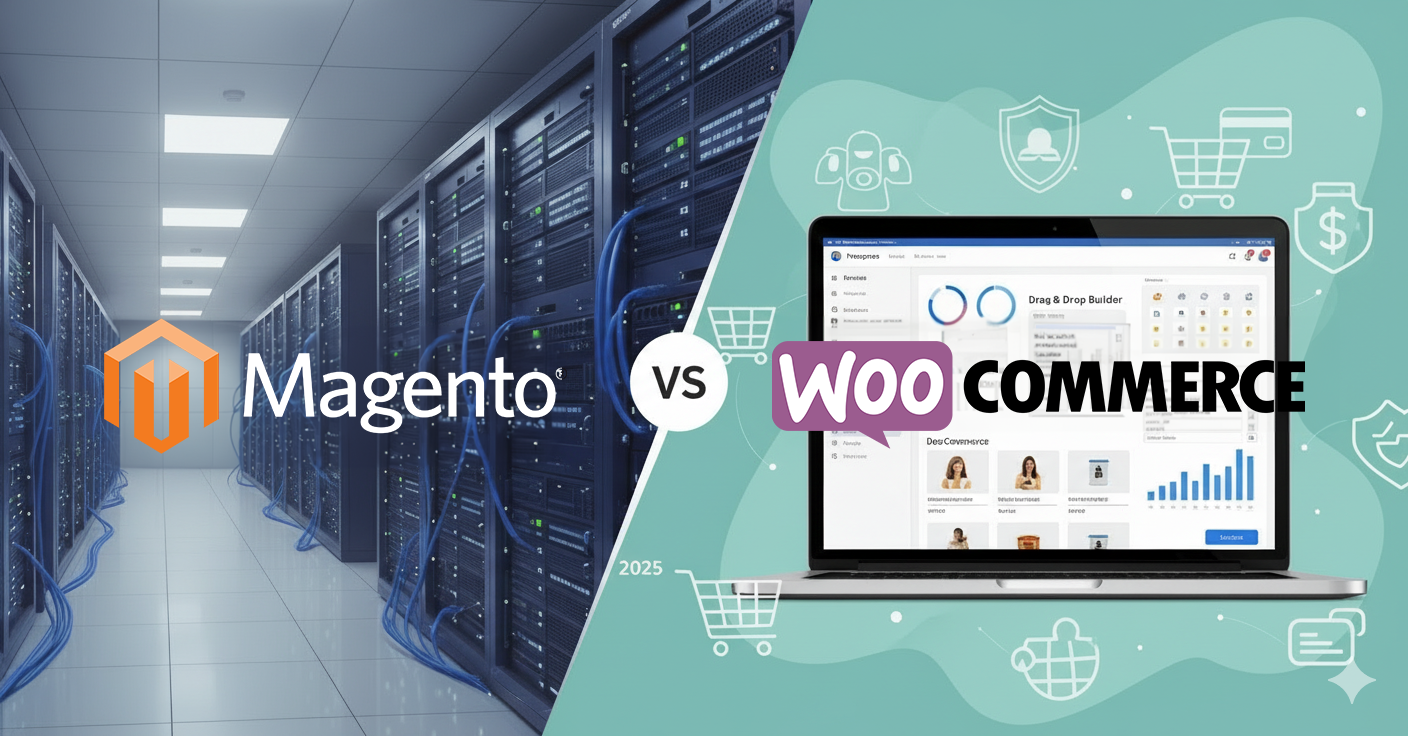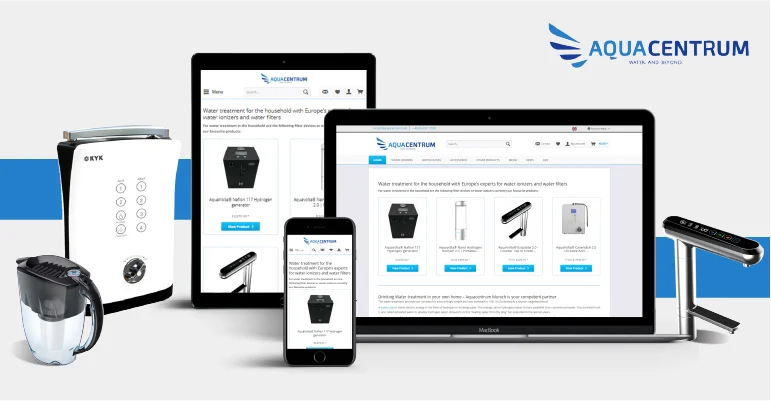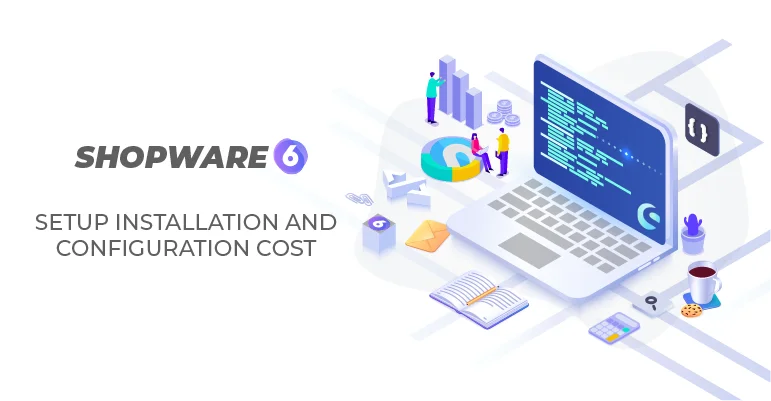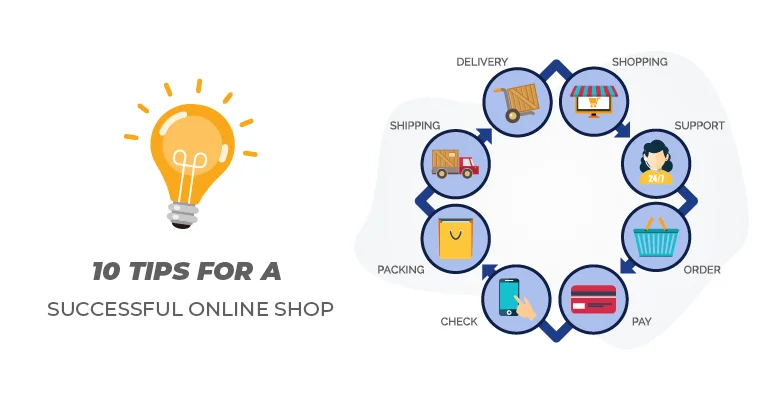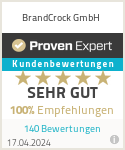The eCommerce industry is filled with choices, and one of the biggest decisions any business owner faces is choosing the right platform. We are not talking about how your online store looks here, but about scalability, performance, security, and whether your platform can keep up with growth.
Two names dominate this conversation: Magento vs WooCommerce.
Both are popular and highly capable, yet they serve very different types of businesses. Magento, now part of Adobe Commerce, is known for its scalability and enterprise-level features. WooCommerce, built as a WordPress plugin, is beloved for its simplicity and affordability. Businesses often struggle to decide between the two because each platform offers compelling benefits.
This guide takes a deep dive into both platforms, like covering pricing, features, performance, security, and real-world usability. By the end, you’ll know whether WooCommerce vs Magento is the right fit for your business in 2025.
What is Magento?
Magento is an open-source eCommerce platform launched in 2008 and later acquired by Adobe in 2018. It has become one of the most robust solutions for businesses looking for deep customization and scalability. Magento comes in two editions: Magento Open Source (free to use but requires technical setup and hosting) and Adobe Commerce (a paid, enterprise-level solution with advanced features and dedicated support).
So, what is Magento exactly? It’s a powerful, developer-friendly platform that allows businesses to build highly customized online stores. With Magento, there are practically no limits—whether you want to create multiple storefronts under one backend, handle thousands of SKUs, or integrate advanced B2B workflows.
Magento’s strength lies in its ability to grow with a business. Large enterprises with complex needs often find it the most reliable option. However, its steep learning curve means it’s not the easiest platform for beginners without technical resources.
What is WooCommerce?
WooCommerce is a free WordPress plugin that turns any WordPress site into a fully functional online store. Launched in 2011, it has become the most popular eCommerce solution for small to medium businesses around the world.
If you’re wondering what is WooCommerce, think of it as the easiest way to start selling online if you’re already familiar with WordPress. The core plugin is free, and you can expand functionality with thousands of extensions and themes. From physical products to digital downloads, subscriptions, or memberships, WooCommerce can handle it all.
Where WooCommerce shines is accessibility. Store owners don’t need deep technical knowledge to launch a site. Instead, they can rely on the WordPress ecosystem for hosting, themes, plugins, and support communities. This makes WooCommerce a cost-effective and beginner-friendly choice for businesses starting out or operating with smaller budgets.
Top 8 Countries Using Magento/WooCommerce
Both Magento and WooCommerce enjoy worldwide adoption, though their user base differs depending on business size and market.
Magento has a strong foothold in the United States, United Kingdom, Germany, Netherlands, France, India, Brazil, and Australia. These are regions where enterprise-level eCommerce has matured, and businesses require advanced features to handle complex operations.
WooCommerce, meanwhile, dominates in the United States, United Kingdom, India, Canada, Italy, Spain, Mexico, and South Africa. Its appeal is strongest in markets where small and medium-sized businesses are the backbone of eCommerce. The low barrier to entry makes WooCommerce a global favorite among entrepreneurs and independent brands.
Magento vs WooCommerce: A Detailed Comparison

Pricing: Magento vs WooCommerce – Which Offers Better Value?
When comparing Magento vs WooCommerce on pricing, WooCommerce clearly offers a lower barrier to entry. Since WooCommerce is a free plugin, your costs primarily depend on web hosting, a domain name, and optional premium themes or extensions. Many businesses can operate a WooCommerce store for as little as $20–$100 per month, depending on traffic and needs.
Magento is more complex. While Magento Open Source is technically free, it requires powerful hosting, developer expertise, and ongoing maintenance, all of which add up. For enterprises choosing Adobe Commerce, licensing alone can cost thousands per year. This makes Magento a significantly more expensive option but one that provides unmatched scalability.
Magento vs WooCommerce: Who Should Use What?
WooCommerce is best suited for small businesses, entrepreneurs, and medium-sized online stores. If you already use WordPress and want to add eCommerce functionality without much hassle, WooCommerce is the natural choice. It’s ideal for companies selling a manageable product range or those focused on content-driven commerce.
Magento, on the other hand, is a better fit for enterprises or fast-growing businesses. If you plan to manage thousands of products, operate multiple storefronts, or integrate advanced business processes, Magento offers the features and scalability you need. Its flexibility makes it especially attractive for industries like automotive, electronics, and fashion, where complex product configurations are common.
Features Comparison: Magento vs WooCommerce
Magento comes packed with advanced features right out of the box. From layered navigation and product bundling to multi-store management, Magento is designed for enterprises that want everything included. It also has strong B2B capabilities, such as custom pricing, bulk ordering, and advanced workflows.
WooCommerce takes a more modular approach. The core plugin is relatively lightweight, covering essential eCommerce functions like product listings, checkout, and payment integration. Store owners expand functionality by installing plugins for features like subscriptions, advanced shipping, or marketing automation.
The key difference is this: Magento is feature-heavy from the start, while WooCommerce grows as you add extensions.
Ease of Use: Which Platform Is More User-Friendly?
Ease of use is one of WooCommerce’s strongest selling points. Installation is quick, setup wizards are straightforward, and the interface is familiar to anyone who has used WordPress. Even non-technical users can manage products, track sales, and update content with ease.
Magento, however, has a steep learning curve. Its dashboard is more complex, and advanced functionality often requires developer input. While it’s incredibly powerful, it can be overwhelming for beginners or small business owners without technical support.
Customization & Flexibility: Which Platform Is More Adaptable?
Both platforms allow customization, but their approaches differ. WooCommerce gives store owners flexibility through themes and plugins, offering thousands of ways to personalize the shopping experience. Businesses can choose from ready-made designs or work with developers to create custom solutions.
Magento takes customization further by giving developers full control. From custom checkout processes to tailored user experiences, nearly every aspect of a Magento store can be modified. However, this flexibility requires significant technical expertise.
Integrations & Ecosystem: Extending Store Functionality
WooCommerce benefits from the entire WordPress ecosystem. With plugins for SEO, marketing, social media, and analytics, it’s easy to extend WooCommerce’s capabilities. Many third-party tools integrate seamlessly with WordPress, giving WooCommerce users a huge advantage.
Magento also offers an extensive marketplace of extensions, but it’s more enterprise-focused. Its ecosystem caters to larger businesses that need ERP, CRM, and advanced payment integrations.
Performance & Speed: Which Platform Is Faster and More Reliable?
Speed matters a lot in eCommerce. A slow site not only frustrates customers but also hurts search rankings and sales. With WooCommerce, performance is tied closely to your WordPress hosting. On good, optimized hosting, it runs smoothly and can easily handle everyday traffic. But if your store suddenly attracts heavy loads—say during sales or holiday spikes, it may struggle unless you upgrade your server resources.
Magento, by contrast, is built with high-volume traffic in mind. It’s more resource-intensive, which means it needs powerful hosting to run properly, but once it’s set up on the right infrastructure, it handles large-scale operations with ease. For businesses expecting thousands of products and customers at once, Magento’s performance is far more reliable.
Mobile Optimization: Magento vs WooCommerce
Shopping on mobile devices has become the norm, and both platforms understand this. WooCommerce leans on WordPress themes that are already optimized for mobile responsiveness. If you pick a good theme, your store will look and function well on smartphones and tablets right away.
Magento goes a step further by supporting progressive web applications (PWAs). PWAs give your customers an app-like experience directly from their browser—fast, responsive, and smooth even with poor connections. This is especially valuable for enterprises that want to give users the feel of a dedicated mobile app without developing one separately.
Security Features: Which Platform Provides Better Protection?
Security is one area where you can’t compromise. Magento is known for taking this seriously. Adobe rolls out regular security patches, and the platform has built-in tools that help protect customer data. Out of the box, it feels enterprise-ready, especially for businesses handling sensitive transactions.
WooCommerce relies more on the wider WordPress ecosystem. With the right security plugins and hosting setup, it can be very secure—but it demands more diligence from store owners. Updates must be applied regularly, and the quality of third-party plugins can directly impact the overall security of your site.
Backup & Disaster Recovery: How Secure Are Your Data and Operations?
Backups are like insurance—you hope you’ll never need them, but when you do, they save you from disaster. WooCommerce makes backups simple through WordPress plugins. Many hosting providers also include daily backups in their plans, so restoring your store after a crash or hack is fairly straightforward.
Magento usually requires a more professional approach. Because the platform handles more complex operations, backups and disaster recovery plans are often managed by dedicated hosting providers or IT teams. This can mean higher costs but also a greater sense of reliability for enterprises that can’t afford downtime.
Data Protection & Compliance: Which Platform Is Safer for Personal Data?
Handling customer data isn’t just about trust—it’s also about legal compliance. Magento provides strong tools for meeting standards like GDPR and PCI DSS, which is why larger organizations often lean towards it. Its built-in compliance features give businesses confidence when handling sensitive customer details.
WooCommerce is capable of meeting the same standards, but it typically requires extra plugins or customization. In other words, it’s not as compliance-ready out of the box, but with the right setup, it can still meet strict requirements.
SEO & Marketing Tools: Which Platform Supports Growth Better?
If your strategy relies heavily on content, WooCommerce has a natural advantage. Since it’s built on WordPress, you get access to some of the best SEO tools in the market, like Yoast SEO, which makes optimization beginner-friendly. Marketing add-ons also integrate seamlessly, allowing you to launch campaigns without much technical effort.
Magento also comes equipped with SEO capabilities, but it often requires more technical fine-tuning to get the best results. For marketing, Magento shines when managing large-scale, complex campaigns. Enterprises benefit from its ability to integrate with advanced marketing systems, while WooCommerce remains the go-to for content-driven stores looking to grow visibility quickly.
Reporting & Analytics Capabilities
Understanding customer behavior is critical for growth, and this is where the two platforms differ. Magento has robust reporting tools built in. You can track sales, monitor product performance, and analyze customer trends without relying too much on third-party solutions.
WooCommerce keeps things simple by default, offering basic sales reports. For deeper insights, you’ll need to connect plugins or external tools like Google Analytics. While this gives flexibility, it does mean relying on extra integrations to match Magento’s depth.
Omnichannel Capabilities: Selling Beyond Your Website
Modern commerce is not limited to your website. Customers shop across multiple channels, from marketplaces to physical stores. Magento is built with this in mind. It integrates with Amazon, eBay, POS systems, and ERP software, making it easier to manage sales across different platforms under one umbrella.
WooCommerce can also connect to marketplaces and external tools, but this usually requires plugins. It works well for small to medium businesses wanting to branch out, but for large enterprises needing seamless omnichannel operations, Magento has a clear edge.
Hosting Requirements & Maintenance Needs
WooCommerce is flexible when it comes to hosting. Most WordPress hosting providers support it, so you can start small and scale up as traffic grows. For many businesses, this flexibility is part of WooCommerce’s appeal—it doesn’t force heavy infrastructure costs right away.
Magento, however, demands more. Because of its size and complexity, it needs specialized, high-performance hosting. Maintenance is also more involved, often requiring professional developers or managed services. This makes it more expensive but also more stable for enterprise-level stores.
Total Cost of Ownership: Initial vs Long-Term Cost
Looking only at setup costs, WooCommerce is far more affordable. The plugin itself is free, and businesses can get started with a modest budget. But over time, as you add premium plugins, themes, and extra features, the cost can grow.
Magento is expensive from the start. Between powerful hosting, developer support, and potential Adobe Commerce licensing, it requires a serious investment. That said, for enterprises, this upfront cost is balanced by long-term scalability and the ability to run complex operations without relying on too many third-party add-ons.
Migration Support: Moving from Other Platforms
Switching platforms can be a stressful process, but both Magento and WooCommerce offer migration support. WooCommerce migrations are generally smoother, especially for smaller stores with fewer products. The WordPress ecosystem provides straightforward tools to move data without much hassle.
Magento migrations are more complex because of the platform’s architecture. Businesses often need professional help to ensure data integrity and smooth transitions. While more challenging, it’s also a necessary step for enterprises looking to scale into Magento’s environment.
Popular Brands Using Magento & WooCommerce
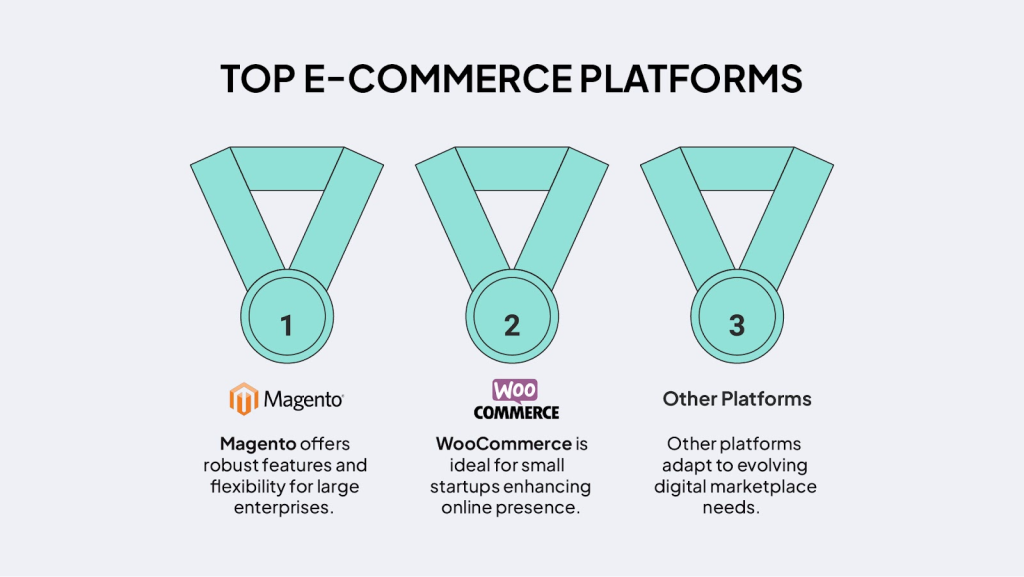
One of the easiest ways to understand the strength of a platform is to look at who’s using it.. Both Magento and WooCommerce power thousands of online stores, but the types of brands they attract are quite different.
Well-Known Brands Using Magento
Magento has always been the go-to choice for big enterprises and global brands. These companies deal with huge product catalogs, international customers, and complex business models, which Magento handles with ease.
Some notable Magento users include:
- Coca-Cola – runs localized storefronts to serve customers across different regions.
- Ford – uses Magento to power parts and accessories sales with strong scalability.
- Jaguar – relies on Magento for sleek, branded shopping experiences.
- HP – showcases how Magento can manage B2B sales on a global scale.
- Olympus – demonstrates Magento’s ability to handle advanced product catalogs.
What these brands have in common is scale. Magento helps them maintain performance, security, and flexibility even when millions of customers interact with their stores.
Well-Known Brands Using WooCommerce
WooCommerce has a very different appeal. It’s favored by smaller businesses, lifestyle brands, and content-driven stores that want eCommerce flexibility without enterprise-level complexity. Its seamless WordPress integration makes it ideal for brands that rely heavily on content and community.
Examples of WooCommerce users include:
- Singer – the sewing machine brand that blends tradition with modern eCommerce.
- Weber Grills – a well-known lifestyle brand selling grills and accessories.
- All Blacks Rugby – the iconic New Zealand team runs its fan merchandise store on WooCommerce.
- AeroPress – the coffee brand famous for its brewing device keeps its store lean and effective with WooCommerce.
- Porter & York – a fresh food supplier that benefits from WooCommerce’s simplicity and flexibility.
WooCommerce gives these businesses exactly what they need: an affordable, customizable, and easy-to-manage platform that doesn’t require an enterprise budget.
How Can BrandCrock Help You in Magento and WooCommerce?
When it comes to running an online store, the platform is just the start. What really matters is having the right team to shape it around your business goals. That’s where we make a difference.
- WooCommerce without the hassle – We set up a store that’s easy to manage, fast, and tailored to your needs, so you don’t waste time wrestling with plugins.
- Magento built to scale – From custom features to heavy traffic handling, we make Magento work for big ambitions without slowing you down.
- Smooth migration – We move your products, customers, and orders safely, so you can switch platforms without losing sleep.
- Ongoing support – We don’t disappear after launch; we keep your store updated, optimized, and ready for what’s next.
Our goal is simple, whether it’s WooCommerce or Magento, we make sure your store actually helps you grow instead of holding you back.
Conclusion
There’s no single winner in the Magento vs WooCommerce debate, it all comes down to what your business really needs. WooCommerce gives you a straightforward, cost-friendly way to start selling, especially if you already use WordPress and want something easy to manage. Magento, on the other hand, is built for businesses that think bigger, need more power, and want a platform that won’t crack under scale.
The right choice comes down to which platform fits your goals, your team, and your growth plans. Pick WooCommerce if you value simplicity and flexibility. Go with Magento if you need advanced features and long-term scalability.
At the end of the day, the best platform is the one that makes it easier for you to focus on what matters most: running your business and serving your customers.


